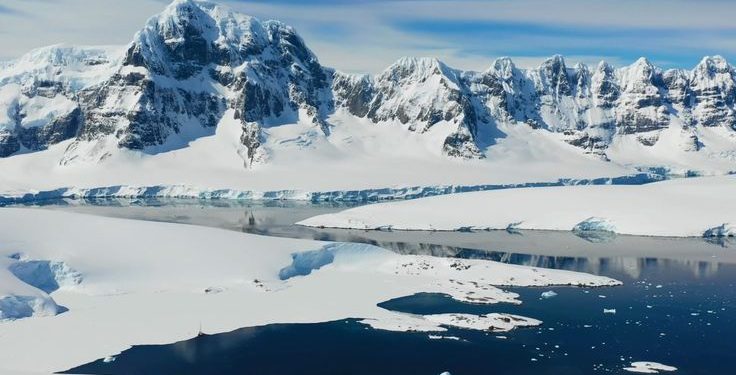Jakarta, Indonesia Sentinel — The Antarctic, home to numerous dormant volcanoes, may face increased volcanic activity as climate change accelerates ice melt. A new study reveals that the melting of Antarctic ice sheets could trigger volcanoes eruptions, as volcanic activity beneath the surface increased.
The findings, published in the journal Geochemistry, Geophysics, Geosystems, highlight how climate change-induced ice loss could not only increase the frequency of volcanic eruptions in Antarctica but also intensify their magnitude, with potentially global repercussions.
According to Live Science, at least 100 volcanoes are scattered across the Antarctic region, many clustered along its western coast. While some rise above the ice, others lie buried hundreds of kilometers beneath the continent’s massive ice sheets.
These subglacial volcanoes remain largely dormant but active. Researchers suggest that melting ice caused by rising global temperatures could reduce pressure on these volcanic systems, potentially triggering eruptions.
How Ice Melt affect Volcanic Activity
As the Antarctic ice sheets melt, they reduce the weight pressing down on volcanic chambers beneath the surface. This reduced pressure allows magma to expand, increasing stress on the surrounding rock walls and heightening the risk of eruptions.
In their study, scientists conducted 4,000 computer simulations to analyze how ice loss could influence volcanic activity in Antarctica. They discovered that thinning ice sheets could lead to both an increase in the frequency and intensity of volcanic eruptions.
Many magma chambers beneath Antarctic ice contain large amounts of trapped gas. As magma cools and surface pressure decreases, these gases can escape rapidly—much like carbonation released when opening a soda bottle—further intensifying volcanic pressure.
Read also : Mount Erebus in Antarctica Releases $6,000 in Gold Dust Every Day
While subglacial volcanoes eruptions may not be immediately visible on the surface, they can significantly impact Antarctic ice sheets. The heat generated by volcanic activity can accelerate melting from below, weakening the ice sheet and potentially triggering further volcanic activity.
Scientists warn that this process could create a self-sustaining feedback loop: ice melt reduces surface pressure, leading to more volcanic eruptions, which in turn generate heat that further accelerates ice loss.
Long term Consequences
Researchers emphasize that these processes are slow, unfolding over hundreds of years. However, they caution that the long-term consequences could be far-reaching.
Research suggests that its feedback impacts could persist even if humanity drastically reduces greenhouse gas emissions. Historical evidence indicates that similar processes may have occurred during the last Ice Age when Antarctica’s ice sheets were significantly thicker.
While the study emphasizes the gradual nature of these changes, it also raises concerns about Antarctica long-term stability and its implications for global sea levels. The continent’s ice sheets are already a major contributor to rising sea levels, and increased volcanic activity could further exacerbate this issue.

























